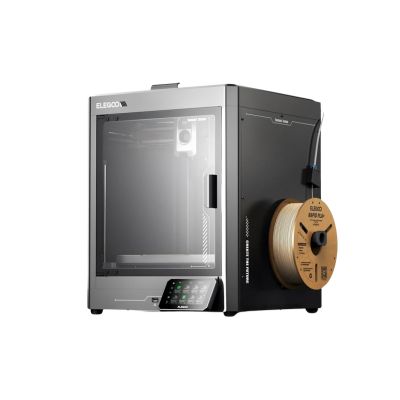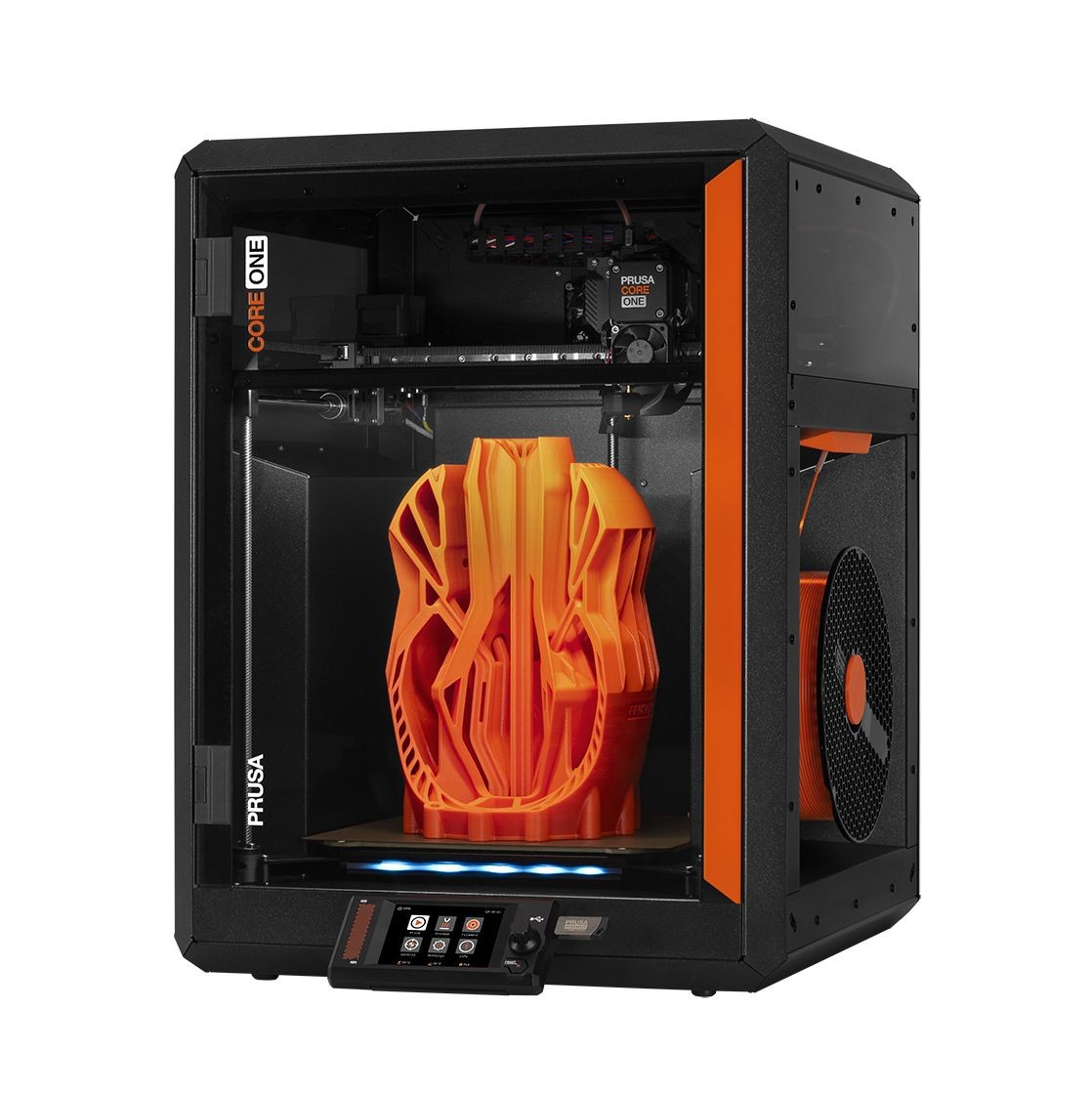Compare Centauri Carbon vs Core One
Comparison between the best 3D printers
Choose the best 3D printer at the best price. The cheapest 3D printers are here.
Buy a 3D printer here with 3D Fila.
 |
 |
|
| Model | Centauri Carbon |
Core One |
| Printing Material | Filament | Filament |
| Buy Filament for Elegoo Centauri Carbon | Buy Filament forPrusa Core One | |
| Estimated price | $500,00 | $1200,00 |
| Manufacturer | Elegoo | Prusa |
| Release Year | 2025 | 2025 |
| Print Volume [mm] | 256x256x256 | 250x220x270 |
| Printer Size [mm] | 500x500x600 | 385x340x620 |
| Weight [kg] | 17,5 | 14 |
| Power Loss Recovery | YES | YES |
| Enclosed printer | YES | YES |
| Bed Leveling | Automatic | Automatic |
| Filament End Sensor | YES | YES |
| Bed type | Heated | Heated |
| Power supply system | Direct Drive | Direct Drive |
| Standard nozzle | 0,4 | 0,4 |
| Maximum Nozzle Temperature [°C] | 300 | 300 |
| Maximum Bed Temperature [°C] | 110 | 120 |
| Maximum printing speed [mm/s] | 500 | 500 |
| Filament holder | YES | YES |
| Camera for supervision | YES | YES |
| Recommended filaments | PLA, PETG, ABS, ASA, TPU, NYLON, CARBON FIBER | PLA, TPU, TPE, HIPS, ABS, PETG, WOOD, PC, PA, PVA, ASA |
| Recommended slicers | Elegoo Slicer, Orca Slicer | Cura, Prusa Slicer, Orca |
| Maximum Resolution [mm] | 0,1 | 0,01 |
| Processor | xBuddy 32 bit | |
| Display | Touchscreen 4,3'' | Touchscreen 3,5'' |
| Power Supply | 350 W | 240 W |
| Connectivity | WiFi, SD, USB | SD |
| Operating systems | Windows, Linux e Macbook | Windows, Linux e Macbook |
| Date of registration in the system | 2025-02-10 | 2024-11-27 |
| Release date | 2025 | 2025 |
| Extra features | The Elegoo Centauri Carbon is a CoreXY 3D printer with an enclosed structure, direct drive extruder, and hardened steel components for abrasive materials. It features automatic bed leveling, a touchscreen, a filament cutting system, and an elongated nozzle designed to reduce clogs. It offers Wi-Fi connectivity for remote file transfer and runs on a Klipper-based firmware, providing advanced control and precise adjustments. | The Prusa Core One is a CoreXY 3D printer featuring a robust steel frame, a 3.5" touchscreen, and a heated chamber for technical filaments. It offers 360° cooling for improved print quality and supports upgrades from the MK4S model. With a compact design, a print volume of 270x250x220 mm, and compatibility with the MMU3 for multi-color printing, it stands out for its ease of maintenance, precision, and speeds up to 260% faster than the MK3S+. |
| Support for multiple colors and materials (AMS and CFS) | NO | YES |
Notes * |
||
| Cost-benefit | 8 / 10 | 7 / 10 |
| Hardware | 6 / 10 | 6 / 10 |
| Tela | . | . |
| Print volume | 4 / 10 | 3 / 10 |
| Performance | 4 / 10 | 4 / 10 |
Conclusion |
| In concluding the comparison between the Elegoo Centauri Carbon and the Prusa Core One, several factors come into play, including features, specifications, and price points. The Elegoo Centauri Carbon presents an attractive option with a lower price point, a larger print volume, and robust features that cater to users interested in versatile printing. Its specifications, such as automatic bed leveling, a direct drive system, and support for a wide range of filaments, make it well-suited for hobbyists and moderate users. The printer's design accommodates various materials, including those that require more substantial settings, and its connectivity options add to its usability. On the other hand, the Prusa Core One, while more expensive, justifies its cost with advanced capabilities in precision and maintenance. It boasts a solid steel frame, superior cooling mechanisms, and a well-established brand reputation that assures customers of quality and support. The inclusion of features such as compatibility with multi-material upgrades makes it more versatile for users looking to experiment with complex printing tasks. Ultimately, the choice between these two printers hinges on the user's specific needs and budget. The Elegoo Centauri Carbon shines in terms of affordability and ease of use for larger prints, while the Prusa Core One appeals to those willing to invest more for enhanced technology and the ability to tackle a broader range of printing projects. Depending on the user's priorities—cost-effectiveness versus advanced capabilities—either option can serve well in its intended capacity. |

